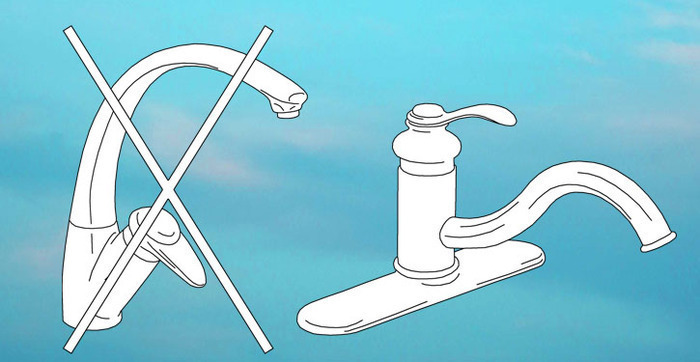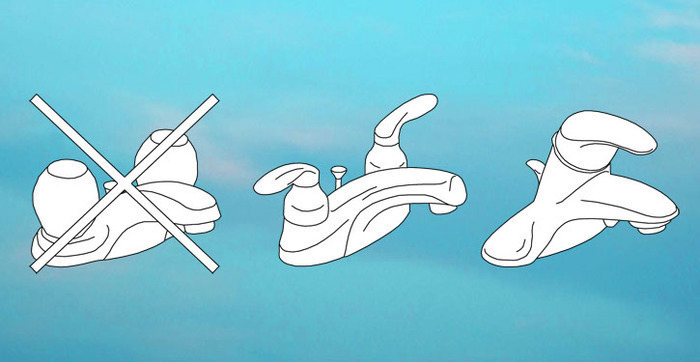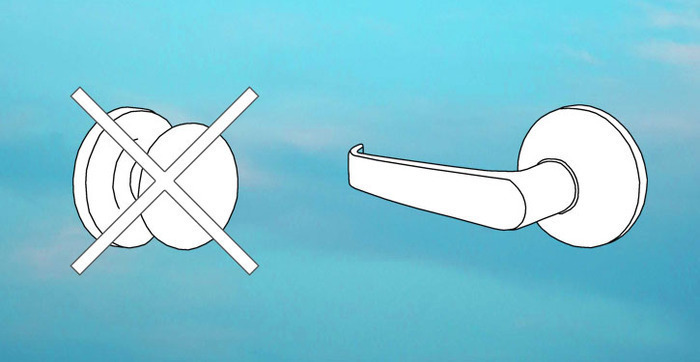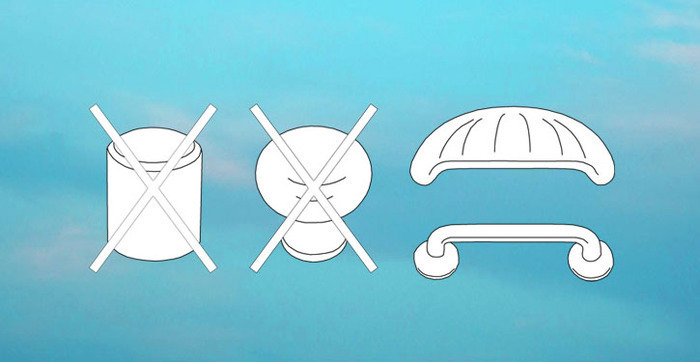
Single-lever handles are easiest to operate. Choose models with the handle above the spigot to prevent scalding.
Another concern is health. A single lever faucet can be operated with the back of the hand when hands have been
in contact with raw meat. This reduces the places where unhealthy bacteria is spread. If you have separate hot
and cold faucet handles, choose lever or "X" designs as they are easier to grip - even with wet or soapy hands.

Single lever designs, like the one on the right, are easiest to operate. Look for clear indications of hot and
cold to prevent accidental scalding. If hot water is a safety risk, add an anti-scalding control device.

Some door handles require more strength to operate than others. A round door knob is harder to operate than
a lever handle. The round requires finger strength and rotational dexterity; the lever can sometimes be opened
with an elbow. Make sure that the end of a lever handle curves in toward the door, otherwise, it will hook
your cloths and bags.

The two handles on the right are simple easier to grab and pull. The top one is referred to as a clam shell
while the bottom one is often called a "C" or "D" style handle. Handle-less cabinets and drawers usually have
a lip that you must grab to open; this too requires more dexterity and strength than a child or someone
with arthritis might have.

The standard 14 inch height shown on the left is too low for the general population. The standard 19 inch height
suitable for wheelchair users is too high. Look for what is increasingly referred to as, comfort height, 16 or
17 inches off the floor. A wall mounted bowl can be placed at any height, and, makes bathroom clean-up easier.
Its water tank is in the wall providing a few extra inches of floorspace. A bidet is another welcome feature.
Consider a separate unit or an add-on to your existing toilet.





